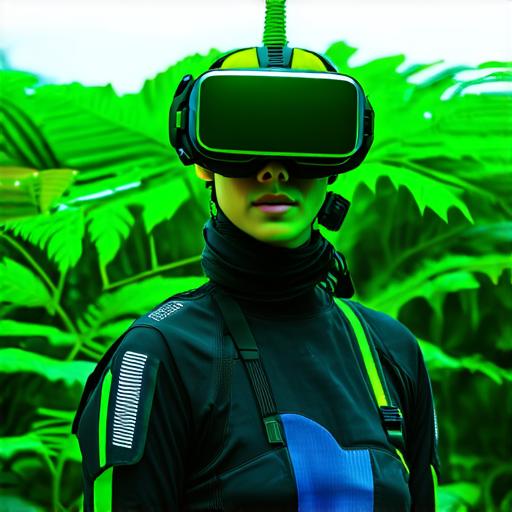
When will full dive virtual reality become a reality?
Virtual reality (VR) technology has come a long way since its inception. From simple arcade games to immersive simulations, VR has shown significant potential in various fields. However, one of the most intriguing and futuristic concepts in the realm of VR is full dive virtual reality (FDVR). In this comprehensive guide, we will explore the concept of FDVR, its current state, and the future prospects for this revolutionary technology.
Understanding Full Dive Virtual Reality
Full dive virtual reality refers to a level of immersion where the user is completely submerged in a virtual world. Unlike traditional VR systems, FDVR does not require any external sensors or devices. Instead, it uses a combination of advanced AI and machine learning algorithms to create a fully interactive and immersive environment that replicates real-world experiences with unparalleled accuracy.
The concept of FDVR is based on the idea that the human brain has the ability to adapt to new environments and stimuli. By creating a virtual world that is indistinguishable from reality, FDVR can trick the brain into believing that it is in an actual physical location. This level of immersion is achieved through advanced sensory technology, including haptic feedback systems, 360-degree displays, and sophisticated AI algorithms.
Current State of Full Dive Virtual Reality
Although the concept of FDVR is still in its infancy, there have been significant advancements in the development of technologies that could make it a reality. One of the key challenges faced by FDVR developers is creating a fully immersive environment without causing physical discomfort or nausea. This has led to the development of new approaches to sensory stimulation, such as the use of brain-computer interfaces (BCIs) and advanced haptic feedback systems.

Another challenge faced by FDVR developers is the cost of the technology. Creating a fully immersive environment that can be easily replicated in real-time requires significant computing power and resources. However, as technology continues to advance, the cost of producing these technologies is likely to decrease, making FDVR more accessible to consumers.
Future Prospects for Full Dive Virtual Reality
Despite the challenges faced by FDVR developers, there are significant opportunities for this technology in various fields. For example, FDVR could be used in education and training, allowing students to experience real-world scenarios in a safe and controlled environment. It could also have applications in entertainment, gaming, and tourism, providing users with unique and immersive experiences that they cannot find elsewhere.
Moreover, FDVR has the potential to revolutionize healthcare, enabling patients to undergo surgery or receive treatment in virtual reality environments that mimic real-world scenarios. This could significantly reduce the risk of complications and improve patient outcomes.
Summary
In conclusion, full dive virtual reality is a fascinating concept with significant potential for various fields. While there are still challenges to overcome in terms of cost and technology development, the future prospects for FDVR are promising. With continued research and innovation, it may not be too far from becoming a reality.


